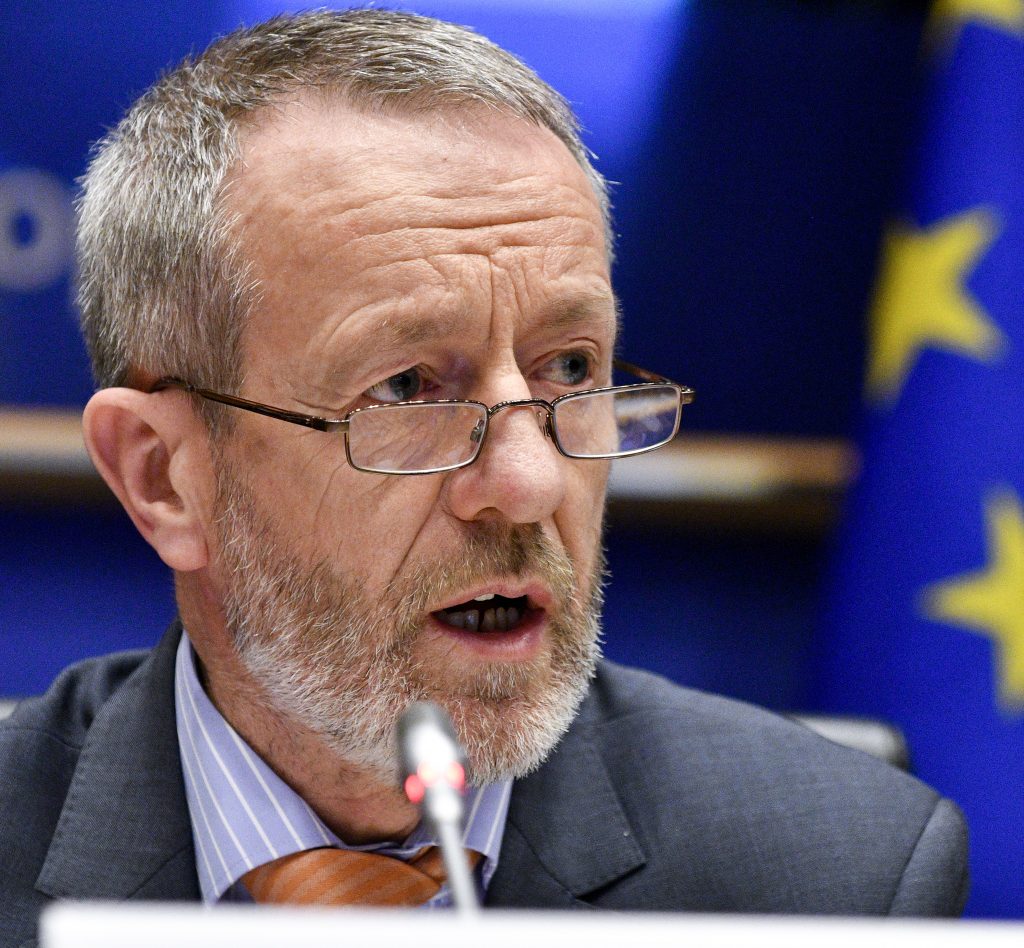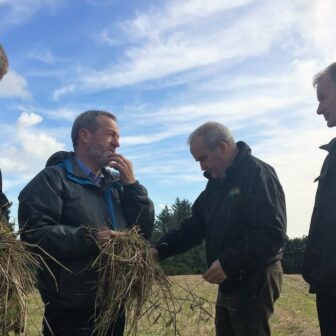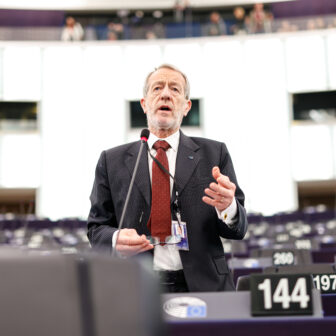It is a pleasure to have the opportunity to join you at this week’s conference and I commend everyone at IWEA for the hard work they have put into making it happen. The COVID-19 pandemic has had an enormous impact on us all, and one of the unfortunate consequences is that a great conference like this is confined to being held online. Still, it is great that we are able to participate digitally, and I am sure that it will be a big success over the next few days.
This year’s conference is particularly timely and not just because Ireland continues to perform brilliantly in integrating wind onto our electricity system, but also because this year, more than ever before, we have significant political momentum at both national and EU level behind increasing our deployment of renewables.
The new government has set out its ambition for the large-scale deployment of wind, building on the target we already had for at least 70% renewable electricity by 2030. The government sees Ireland as potentially being major exporter of clean renewable electricity to the rest of Europe, with the ambition of developing 30 gigwatts or more of floating offshore wind power in the Atlantic, along with 5 gigwatts of offshore wind off the Southern and Eastern coasts.
This goes hand in hand with EU-level ambition, where just this week President von der Leyen has proposed to increase the 2030 emissions target from 40% to 55% – something that is very welcome. In the months ahead, we also expect to have a proposal on a new Offshore Renewable Energy Strategy; a strategy that must recognise the huge potential we have here in Ireland and the contribution we can make to the decarbonisation of the European electricity system.
Such ambition both at national and European level is extremely welcome, but there is work to be done to ensure that Ireland is in a position to fulfil its potential.
In my view, the first step we must take is urgently sorting out our planning framework. I was pleased to see IWEA’s CEO, David Connolly, come out strongly on this point last week. David is correct, if we fail to fix our planning system, we will miss our targets in 2030.
Our current planning system is not fit for purpose and is hampering our ability to deploy renewable energy at a scale in line with our 2030 ambition. Decisions take far too long with massive timelines for appeals, which delays project promoters and runs up costs – something we need to avoid if we want to maintain our competitiveness and make sure Ireland is seen as a good place to do business. These delays need to be addressed by the new government, and I’m confident that Minister Burke can bring new impetus to the issue in the months ahead.
Additionally, we need to finalise the wind energy development guidelines, and ensure that they are in line with the latest science, facts and best practice. Of course there are issues for local communities and nearby houses on things like flicker, noise and visual amenity, but there needs to be a balance between these considerations, and the importance of rolling out clean energy and driving local investment.
I welcome the constructive approach that the wind energy industry and IWEA representatives have consistently taken on this issue over the years, and I hope the new government can make progress in improving efficiency and practicality across the entire renewable energy planning framework – something that has been badly needed for a number of years.
The other obvious thing we need is to provide a supportive policy framework for renewable energy in line with the level of deployment we plan to achieve over the next ten years. The approach of the new government on this has thus far been very positive, particularly the new Renewable Energy Support Scheme (RESS). I welcome the announcement a couple of weeks ago of the results of the first auction, with 82 new projects worth €1.4 billion of investment set to go ahead.
Maintaining a stable, predictable and ambitious support framework over the next decade will be crucial if we are to meet our targets. We must give long-term visibility and certainty to the investors that are ready and waiting to put their money into these important projects.
Supporting renewable energy must be a cornerstone of our economic recovery in the post-Covid years. These are future-proof, no-regret investments that will help to transform Ireland’s economy into one that is sustainable and carbon-neutral, while creating jobs and value in our rural communities; an opportunity that cannot be missed.
Maintaining a high level of ambition on our Renewable Support schemes will also ensure that we play our part in delivering the European Green Deal.
Often when we speak about Ireland’s efforts on climate action at EU level, it is framed negatively, usually about us missing our targets. However, the integration of wind energy into our system is a major success story for this country, and perhaps that is not highlighted enough.
Ireland, in large part through the brilliant work of EirGrid, is a world leader in integrating renewable electricity onto the grid. There will, of course, be a need for this government to address the need for investment into developing our transmission system to prevent renewable generation being limited by system constraints, but overall we are leading the way in this area compared to our European counterparts.
We must highlight the important role that Ireland can have in delivering the European Green Deal, and I think that starts with finding efficiencies at European level for the deployment of renewable energy where resources are most abundant.
Ireland could be a major beneficiary of the Commission’s cross-border approach to Renewable Energy policy. On Thursday, the Commission came forward with the new Renewable Energy Financing mechanism, a lower-profile, yet extremely important element of the clean energy package, which we finalised in mid-2018.
In this new mechanism, an EU Member State can invest in renewable energy projects in another Member State. The Commission will manage the scheme and run public tenders financed by member state contributions as outlined in the Governance regulation.
The scheme allows Member States to support projects where they are more cost-efficient than if they were deployed domestically, or not possible; for example, a landlocked country can invest in an offshore wind project in a maritime country. The host country benefits from the local investment and job creation, while the investing country benefits from the project counting towards its renewable energy target.
We are not yet at the stage where we have full EU-wide support schemes for renewable energy. However, through this mechanism, along with other initiatives such as the opening of national support schemes to outside participants in the Renewable Energy Directive, it is clear that the direction of travel on this issue is towards further EU cooperation on financial support for deployment. This can only be positive for Ireland, where we have some of the best renewable resources in the world.
If we want to deliver 30 gigwatts of floating offshore wind and export to the EU, financing will need to go beyond what could be delivered by a national renewable energy support scheme. We need to think bigger, and that’s where EU-level action will be crucial.
We are currently in the middle of work on a number of initiatives that will be of significant importance to Ireland’s renewable sector.
I already mentioned this week’s announcement of an increased target for 2030, and this has a knock-on effect on the sectorial legislation. We will see increases in the targets agreed for Renewable Energy and Energy Efficiency ahead of the reviews, which are due in 2023; with work beginning next year.
The Offshore Renewable Energy Strategy will be extremely important for Ireland, and we need to make sure in the months ahead that Ireland’s potential is a core part of it, alongside the North and Baltic Seas. The Commission are talking about the need to drastically upscale offshore deployment to at least 20 times the level it is today – with the figures mentioned being between 230 and 450 gigawatts.
The Strategy will also seek to update the TEN-E regulation, and ensure it is fit for purpose. TEN-E sets the framework for the Projects of Common Interest, which will be important for increasing interconnection levels and enhancing our ability to be a major supplier.
Vice President Frans Timmermans and Commissioner Kadri Simson are leading the charge on this. They see the offshore renewable energy sector as strategically important for the EU’s economic recovery and the strengthening of its industrial competitiveness, and see its development going hand-in-hand with the hydrogen strategy launched over the summer. These present big opportunities for Ireland.
It will be important to ensure that Ireland is in a position to benefit from the hydrogen strategy. The emphasis on the large-scale production of renewable, green hydrogen is very positive for the acceleration of renewable energy deployment.
The Commission want to connect 80-120 gigawatts of solar and wind energy production capacity to electrolysers to provide the necessary electricity for the outlined ambitions – again an area where our renewable potential puts us at an advantage and we must be ready to capitalise on the opportunities presented.
I conclude by saying that while all of this is very exciting, and while the ambition at national and European level is clear, we can’t lose sight of the need to address the obstacles, and ensure that we can turn aspirations into reality. We need to sort the planning issues, we need to finalise the wind guidelines, and we need to make the needed infrastructure investments to minimise curtailment. At the same time, we need to work at EU level to make sure Ireland is at the centre of all these strategies, and that the potential we have is fully recognised.
These are big challenges, but ones that are worth overcoming, as the long-term benefits to our economy and society are clear.




